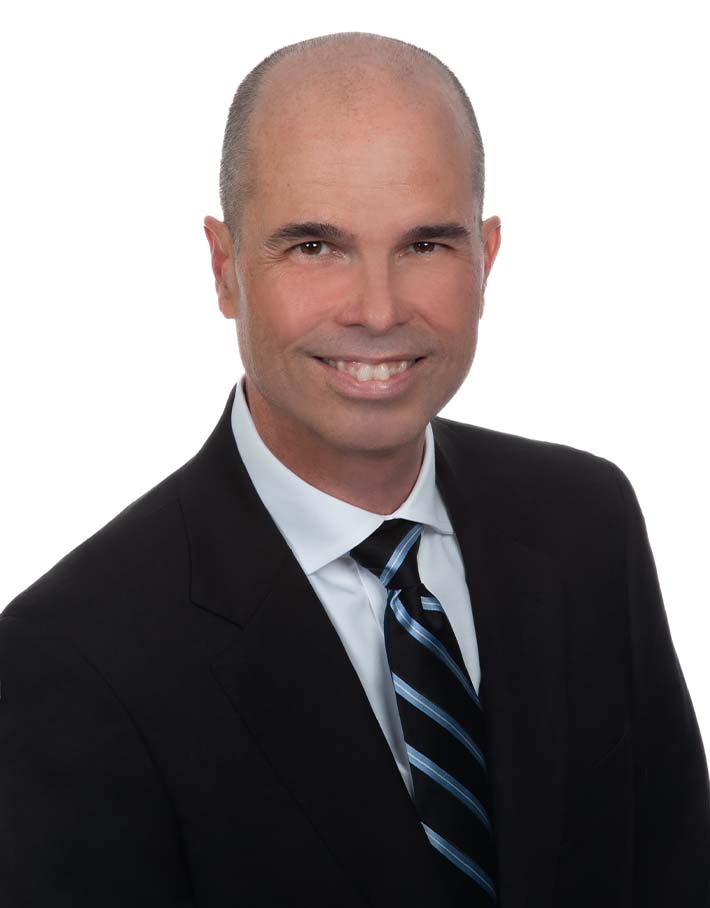History Provides Focus for the Future – History of Equity Markets (Part 1)
By Buddy Doyle and Frank Childress
Subscribe to our original industry insights
Equity markets are changing so rapidly through the products being offered, like digital assets, the technology used in trading, tracking and data management, and the evolving regulations. In today’s podcast, Oyster’s experts, Buddy Doyle and Frank Childress take a peek into the history of the US equity markets so we can learn what questions to ask today.
Transcript
Transcript provided by Temi transcript services
Libby Hall: Welcome to the Oyster Stew podcast. I’m Libby Hall, Communications Director at Oyster Consulting. Equity markets are changing so rapidly through the products being offered like digital assets, the technology used in trading tracking and data management and the evolving regulations. In today’s podcast, Oyster’s experts, Buddy Doyle and Frank Childress take a peek into the history of the US equity markets so we can learn what questions to ask today. Buddy let’s get started.
Buddy Doyle: Thanks Libby. It’s great to be here with Frank Childress today. Frank is very instrumental to our trading and markets practice, and I had the pleasure of working with Frank for a brief period of time as we overlapped in our past. And I’m really excited to have Frank with Oyster. So, Frank, I know you’re here to talk to us a little bit about the history of the markets and the things that we can learn today from how things have evolved.
Frank Childress): Yeah. Thank you, Buddy. Certainly, a long-term interest of mine has been the equity markets and equity market structure and how it’s evolved over time. And certainly a lot of that evolution is due to everything from mishaps and crises to significant technology innovation. And I can just kind of walk you through that and give you a little bit of a timeline of over 200 years, highlighting some of the more significant events, the primary crises that have taken place over the years that have led to the formulation of regulatory framework that guides us today. So if we go all the way back to the beginning of this in 1792, I think most of us are familiar with, that follow any market history, the Buttonwood agreement, which was signed by 24 brokers. And this agreement was the first to establish a centralized market, at least within the United States.
And perhaps not surprisingly, as we look back at this, the agreement was rife with conflicts of interest, including giving preference to the other signers of the agreement. Ultimately this group formed years later in 1865 into what’s now known as the New York Stock Exchange, or it moved to that location in 1865. The New York Stock Exchange, as it does today, had strict listing requirements. So smaller companies had no real avenue for trading. So as the market evolves and we find solutions for things, the AMEX was formed in 1865 to provide capital markets access for trading for emerging companies or smaller growing companies. And then as we kind of move forward quickly through history, leverage and other extraneous events led to the infamous market crash in 1929. And this was really one of the early and certainly the biggest crisis that triggered a wave of regulation that still lives with us today. And that includes the Securities Act in 1933 and in the Securities Exchange Act of 1934. So these essentially established the precedent of a crisis leading to regulation.
Buddy Doyle: Frank, I think one of the things that we often put in our compliance disclosures is past performance is not indicative of future results, but I think it is. I think we can learn a lot from history. While you go back to the 1700’s to pull this together, really the modern regulatory scheme that started out at the crash of 1929, if you can call that modern and it’s as about as modern as we have, but the things that happened out of that crash kind of remind me a little bit of today. In that you had the 33 Act that came out of that. For the first time you had to have audited financial statements to be on the New York Stock Exchange. Before then, it said what it said. Then the Glass Steagall Act breaking up some of the banking and investment banking activities.
Yeah, the Securities and Exchange Act of 1934 and Joe Kennedy becoming the first chairman of the SEC as a result of that. And again, I think Joe Kennedy’s selection was pretty interesting because the big concern was insider trading. And I think the thought was to catch a criminal, you’ve got to hire a criminal. And Joe Kennedy was, right or wrong, looked at as that kind of guy. And they started opening SEC regional offices. And, during this time we don’t think through it, but there was a lot of challenges to this. The Supreme Court had to review the rules in the act of 33. They got challenged – just like DOLs, getting challenged today to some things. And so all of these kinds of things with the New York Stock Exchange governance are getting reorganized later in the thirties, the trust and denture act, the NASD being created during this period of time go all the way to the 1940 Investment Company Act. And the 1940 Investment Advisors Act, the New York Stock Exchange multiple trading rule. And all of this was really, really hot right on up until like 1941. And then it seemed like in December of 1941, people’s attention turned to something else and that regulatory wave subsided in favor of – I believe everybody calls that World War II.
Frank Childress: As we fast forward a hundred years or so to the market structure that impacts us today. In the last couple of decades, we’ve seen decimalization take place in 2001 and then Reg NMS. The National Market System was introduced in 2005 and then implemented in 2007. And that was really one of the more significant regulatory events from an equity market structure standpoint, centralizing the equity markets. Requiring electronic linkages between all the exchanges and trading systems and requiring brokers to seek and find the best markets for their retail and institutional clients. So really putting an emphasis on the term best execution and making sure both retail and institutional investors were being treated fairly and that the markets were linked. So there wasn’t really any arbitrage that took place between the various time disparate systems that there were so you could have, you know, one set of quotes on one system and a different set of quotes on another system.
So regs brought all that together – linking all the different exchanges and ECNs and things together. One of the quick reflexes that I think is certainly interesting. I don’t think it’s enough coverage today that what sort of quickly happened after that, was the de-mutualization of the exchanges. NASDAQ went public in 2005, and the New York Stock Exchange went public in 2006. Previously, they were sort of like a public utility, owned by the industry but in the industry paid for their existence. But once they moved to a public company and were moved from sort of a not-for-profit model to a very much a for profit model, the rules kind of changed for the exchanges. There were some positives out of that. It enhanced competition but it introduced this whole world of inducements and rebates to attract order flow, which essentially was the precursor for what we now call payment for order flow which is talked about quite a bit with our regulators today. A little-known secret by retail clients, but very few retail orders actually go to the New York Stock Exchange or to NASDAQ.
Now there’s a whole network of what we refer to as wholesale market makers that provide price improvement. So you’re, in most cases, retail investors are getting executions inside the national best bidder best offer. And this isn’t any real fault of the exchanges that this has gone away from them. This is their exchanges are essentially regulatorily prohibited from quoting or executing inside the spread. So interestingly, one of the fore runners of this practice of providing execution better than the exchanges could provide, was a gentleman by the name of Bernie Madoff, <laugh> who became a little bit more infamous for some of his other practices several years later. But the wholesale marketplace is really what provides the execution for the retail network. And the system today has all types of inner inducements for sending order flow in the direction of wholesalers and exchanges. And with that is some form of rebates and payments for order flow which is a large discussion with the SEC and other regulators today. And then more recently, from a regulatory and event standpoint, we talked about Bernie Madoff, that threw a lot of regulatory overview our way, and then the infamous flash crash of May 6th in 2010.
Buddy Doyle: But does the flash crash go back to decimalization? In 2001, you, you did decimals, you, you made things go a lot faster. We got into sub pennies, and it just kept going. Does not having to trade at the NBBO help lead to flash crashes? And I think when I go back to high frequency trading firms, I think that all started in 1961 with the SEC study of the OTC markets. And that led to NASDAQ ultimately in 1971, that led to the 1975 version of Reg MS and negotiated commissions. You wouldn’t have had a flash crash if there was still $150 minimum commission, cuz nobody could make money on a sub penny spread. I think we’ve seen all of these things that move us to better outcomes for retail investors leading to more risk for retail investors and leading to more risk for the securities business.
Frank Childress: Probably most recently we had in 2007, 2008 financial crisis, and then the severe market volatility in 2015 with a lot of global economic concerns that took place. And we saw some enormous swings in the market. So all these events have led to a series of regulatory actions, a lot of enhanced market circuit breakers, which have been beneficial – limit-up, limit-down constraints and pulse on individual securities. A lot of review of short sales, temporary ban on short sales, and then a renew and revision of the old uptick rule to allow short sales to exist again. And some of the larger regulatory initiatives that we’re dealing with today are CAT – the Consolidated Audit Trail, is really an enormous data undertaking by the regulatory entities in coordination with the broker dealer community. And which is really a capturing of the entire life cycle of a trade which has all the information from the origination of the trade all the way through to where it was executed, whether it was executed, prices, times, client information and everything that goes along with that. Which some aspects of that are a little bit controversial. And then Reg SCI, which was a systems compliance and integrity, to make sure that individual systems aren’t contributing to any material market disruptions.
And then there’s been a lot of best execution focus with Reg NS and rules specifically best CC rules, 605 and 606, bringing greater transparency to equity and option order execution quality and where the individual firms route their order flow. So it’s really provide a platform disclosures mandated disclosures on broker dealer websites to provide that information to clients that might have interest in understanding what brokers are doing with their orders. So all said, I happen to fall into the camp that retail investors have never had it better. They have tremendous access and speed. They’re tight spreads in the US equity markets. There’s an abundance of price improvement that exists today, tremendous liquidity in the market and more choice than ever. And now we’re looking at new access on your phone to trading, which brings in a whole other level of potential regulatory interest with access and fractional shares and gamification and other buzzwords that keep the regulators and us interested and engaged to the markets.
Libby Hall: Thanks again for listening to the Oyster Stew podcast, don’t forget to subscribe so we can help you make the best decisions for your firm. If you are struggling with a topic and you’d like us to do a podcast on it, or you’d like a free consultation, please reach out to us at 804-965-5400 or visit our website at www.oysterllc.com. Have a great day.




